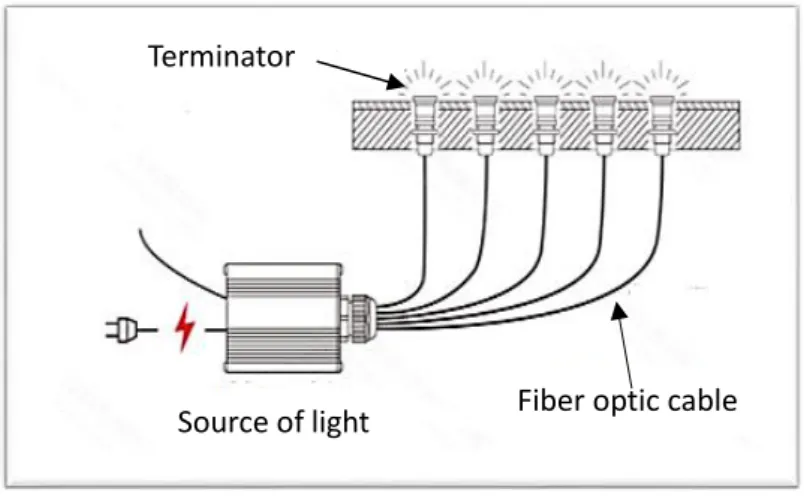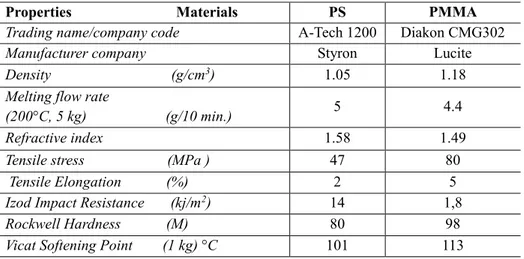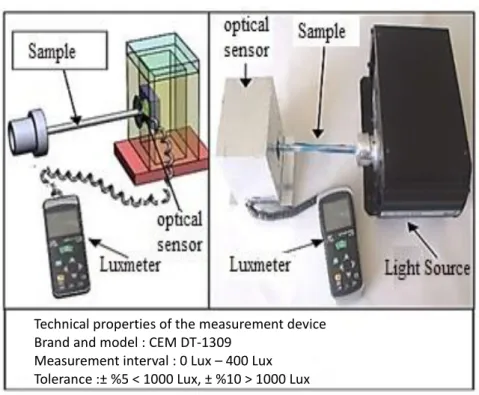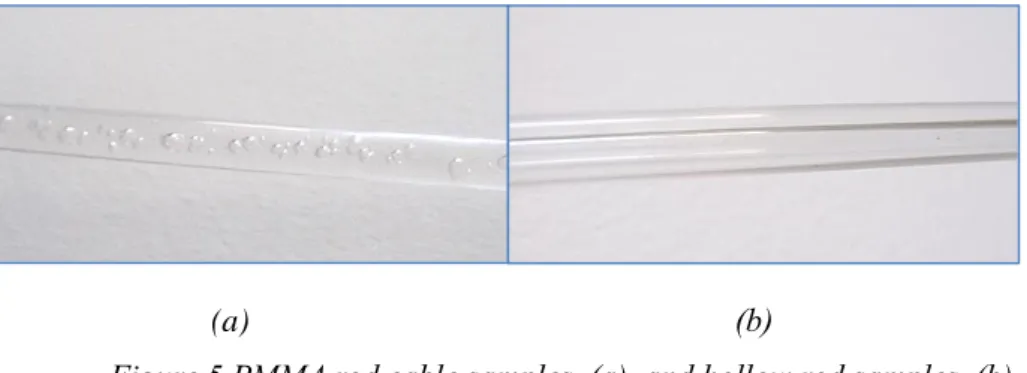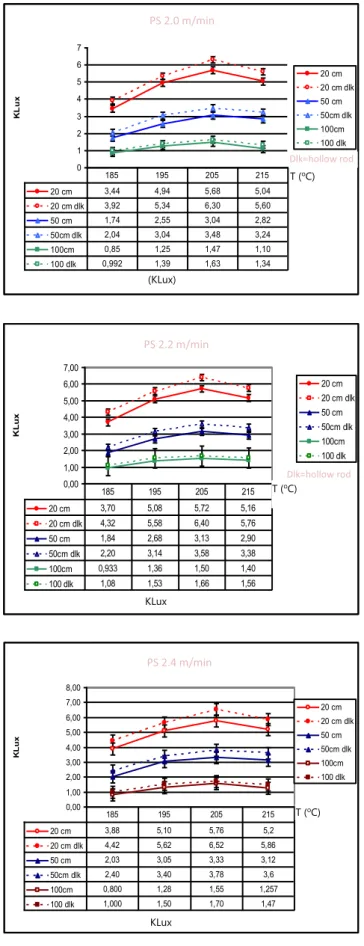Sayı 17, S. 718-726, Aralık 2019
© Telif hakkı EJOSAT’a aittir
Araştırma Makalesi
www.ejosat.com ISSN:2148-2683No. 17, pp. 718-726, December 2019
Copyright © 2019 EJOSAT
Research Article
Manufacture of Large-Diameter Fiber Optic Cable by Extrusion
Method and Improvement of Process Parameters
Osman Özdamar
1*, Ahmet Demirer
21 Bilecik Şeyh Edebali Üniversitesi, Osmaneli M.Y.O., Makine Bölümü, Bilecik, Türkiye (ORCID: 0000-0001-6353-6812) 2 Sakarya Uygulamalı Bilimler Üniversitesi, Teknoloji Fakültesi, Makine Bölümü, Sakarya, Türkiye (ORCID: 0000-0003-1252-9203)
(İlk Geliş Tarihi 1 Ekim 2019 ve Kabul Tarihi 8 Kasım 2019) (DOI: 10.31590/ejosat.639420)
ATIF/REFERENCE: Özdamar, O. & Demirer, A. (2019). Manufacture of Large-Diameter Fiber Optic Cable by Extrusion Method
and Improvement of Process Parameters. Avrupa Bilim ve Teknoloji Dergisi, (17), 718-726.
Abstract
Nowadays, energy resources are rapidly depleted and energy costs have risen. Therefore, the efficient use of energy resources has gained importance. The use of energy-saving fiber optic lighting systems has increased. In this study, PMMA and PS (crystal) polymers with high optical properties were used. The manufacture of fiber optic cable for the purpose of lighting by extrusion method was realized experimentally. The samples were manufactured at four different temperatures, three different production rates and two different forms. Fiber optic cables with different lengths and forms were compared in terms of light intensity. As a result of the study, the sample manufactured in PMMA was found to be better than the samples in PS. The best light intensity values of PMMA samples were observed at 2.2 m min at 220 oC. On the other hand, the best light intensity was achieved in PS samples at 205 oC at 2.4 m/min. In addition, it
was observed that there was an increase (10-17%) in the light intensity hollow rod samples compared to rod samples.
Keywords: PS, PMMA, extrusion method, fiber optic cable
Ekstrüzyon Yöntemiyle Büyük Çaplı Fiber Optik Kablo Üretimi ve
Proses Parametrelerinin İyileştirilmesi
Öz
Enerji kaynaklarının hızla tükenmekle birlikte enerji maliyetlerinin yükseldiği günümüzde enerji kaynakları en verimli şekilde kullanmak gerekmektedir. Enerji tasarrufu sağlayan fiber optik aydınlatma sistemlerinin kullanımı günümüzde giderek artmaktadır. Yapılan bu çalışmada, optik özellikleri yüksek olan PMMA ve PS (kristal) polimerler kullanılmıştır. Ekstrüzyon yöntemiyle aydınlatma amaçlı fiber optik kablo üretimi deneysel olarak gerçekleştirilmiştir. Elde edilen numuneler; dört farklı sıcaklık, üç farklı üretim hızında ve iki farklı formda gerçekleştirilmiştir. Farklı boy ve formlardaki ışık şiddetleri karşılaştırılmıştır. Yapılan çalışma sonucunda
PMMA’dan üretilen numune PS’ye göre daha iyi sonuç verdiği görülmüştür. PMMA numunelerde ışık şiddetlerinde en iyi değer 220oC
sıcaklıkta 2,2 m/dak da gerçekleşmiştir. PS numunelerde ise 205oC sıcaklıkta 2,4 m/dak da en iyi ışık şiddetine ulaşılmıştır. Dairesel
delikli forma sahip numuneler, dolu formlu numunelere kıyasla ışık şiddetinde (%10-17) artış gözlenmiştir.
Anahtar kelimeler:
PS, PMMA, Ekstrüzyon yöntemi, Fiber optik kablo
* Sorumlu Yazar: Bilecik Şeyh Edebali Üniversitesi, Osmaneli M.Y.O., Makine Bölümü, Bilecik, Türkiye, ORCID: 0000-0001-6353-6812,
1. Introduction
Fiber optic lighting system is the movement of light from a light source to the desired target point with the help of fiber optic cables. Fiber optic lighting system consists of three major components as light source, fiber optic cable and terminator. While light source produces the light required by the system, the fiber optic cable allows movement of the light from the light source to the desired target point. On the other hand, terminator provides the diffusion of the light transported by optical fiber cables into interior.
Figure 1. Major components of fiber optic cables
Transported the sun light into interior by optical fiber cables. They reached the light levels between 800 and 2824 lux. (Laila et al. 2017).
Compared the light performance of fiber optic cables with 3mm and 20mm diameter which are used in lighting. They concluded that when the diameter becomes greater, the intensity and the homogeneity of the light also become greater (Bahram et al. 2018).
Produced a 60 km cable with a diameter of 1 mm using plastic fiber optic cable preform/tube technology. In the study, plastic fiber optic cables were coated with polymethylmethacrylate (PMMA) on polystyrene (PS) core and 40% efficiency was obtained (Rebourgeard et al.1999).
Compared PMMA, PF, PC, PS polymers used in the manufacture of fiber optic cables; and found that fiber optic cables manufactured with PF were better in communication field than others. They also stated that the other polymers used in the comparison could be used in the areas as automotive, electronics, lighting, etc. (Harlin et al.2002).
Made comparison between polymer optic cables and glass optic cables; and they observed more losses in polymer fiber-optic cables. They stated that polymer fiber-fiber-optic cables were more efficient in terms of ease of use (Monroy et al. 2003).
Studied on the energy saving potential of the lighting system which was based on fiber optic lighting technology. They reached the conclusion that this potential ranged between 10.8% and 44% for Brazil and between 56% and 89% for the UK. (Ghisi et al. 2006).
In this study, it is aimed to determine the process conditions of PMMA, PS polymers used in the manufacture of fiber optic cables that transmit light in lighting and at the same time, it is aimed to produce a more efficient fiber optic cable by creating a space along the 1.5 mm diameter cable.
In the literature review, it was seen that the process conditions of the fiber optic cables used for communication were investigated, but the production conditions of the large diameter fiber optic cables used for lighting were not found. The production techniques and conditions for these products are regarded as trade secrets and are not transferred to the literature. In addition, in the literature no studies have been found on providing light transmission efficiency and gas output by creating a space in the middle of the large diameter fiber optic cables used in lighting.
2.Fiber Optic Cable Manufacture by Extrusion Method
Extruders machines are the machines that ensure the continuous production of plastic products with the desired cross-section, length; and precise dimensions. These machines are sometimes also called as extruders. The schematic representation of the extrusion line used in the study is shown in Figure 2.
Terminator
Figure 2. Schematic representation of the extrusion line
3. Material and Method
In this study, crystalline Polystyrene (PS) and Polymetalmethacrylate (PMMA) materials with high light transmittance were used for the manufacture of large diameter fiber optic cables used in transferring light to the desired environment. The light intensity capacities of the materials under different process conditions were investigated. In order to determine the appropriate extrusion production conditions, the efficiency of the fiber optic cable samples manufactured at different furnace temperatures and production speeds in terms of light intensity were investigated.
Table 1. Technical Properties of the Materials used in the Study
Properties Materials PS PMMA
Trading name/company code A-Tech 1200 Diakon CMG302
Manufacturer company Styron Lucite
Density (g/cm3) 1.05 1.18
Melting flow rate
(200°C, 5 kg) (g/10 min.) 5 4.4
Refractive index 1.58 1.49
Tensile stress (MPa ) 47 80
Tensile Elongation (%) 2 5
Izod Impact Resistance (kj/m2) 14 1,8
Rockwell Hardness (M) 80 98
Vicat Softening Point (1 kg) °C 101 113
In this study, two different dies were designed for the manufacture of PS and PMMA large-diameter fiber-optic cables. First die was designed as rod and produce 10 mm diameter fiber optic cable. On the other hand the second die was designed as hollow rod and could produce 10 mm outside diameter and 1.5 mm inner outside fiber optic cables. In addition, calibration die equipment was manufactured to ensure the integrity of the products at the die outlet. The solid model drawing of the extrusion die is shown in Figure 3.
Figure 3.Solid model drawing of extrusion die and calibration die
In order to manufacture fiber optic cable, polymer materials were exposed to dehumidification drying in a drying furnace at 90 oC
for 4 hours before the process. Then, the cable was manufactured at four different furnace temperatures, three different production (drawing) rates and at a constant 50 rpm extruder screw speed in all samples, as indicated in Table 2. In the manufacture process, firstly rod samples and then extrusion die pin were installed and the samples were manufactured as hollow rod.
Extrusion machine and technical properties
Top-fed
Single screw extruder barrel
Capacity 10 kg/h - 500 kg/h
Screw Diameter Ø50 mm
Screw length 1125 mm, L/D = 22.5
Motor power 7.5 kW - 10 BG
Figure 4.the measurement set up of the samples by Lux meter
The manufactured samples were divided into groups for light intensity measurement according to production rate and process temperatures. 10 cut ends of 20 cm, 50 cm and 100 cm lengths were sanded and polished (felting process with paste). First, the outer parts of the samples were covered with special gelatin tape for isolation and measurements were made and graphed. The measuring device (Luxmeter) was placed on the opposite of the light source, as shown in Figure 4.
Table 3. Process conditions of PMMA, PS Fiber optic cable extrusion
Die Temperature ( oC) First Region Temperature ( oC) Second Region Temperature ( oC) Third Region Temperature ( oC) Production speed (m/min) Screw rotation speed (rpm) PMMA 210 205 200 195 2.0 2.2 2.4 50 220 215 210 205 230 225 220 215 240 235 230 225 PS 185 180 175 170 2.0 2.2 2.4 50 195 190 185 180 205 200 195 190 215 210 205 200
Technical properties of the measurement device Brand and model : CEM DT-1309
Measurement interval : 0 Lux – 400 Lux Tolerance :± %5 < 1000 Lux, ± %10 > 1000 Lux
4.Result
4.1. Visual Analysis
As a result of the extrusion process, gas bubbles were observed in the interior of PS and PMMA materials since some moisture and gases (styrene etc.) presented in the polymer emerge. These gases form air bubbles on the sampe (Figure 5a,b and Figure 6a, b). These bubbles also slightly reduce under different process conditions but do not completely disappear.
(a) (b)
Figure 5.PMMA rod cable samples (a), and hollow rod samples
(b)
In order to eliminate the problem of gas bubbles and to manufacture hollow rod samples with the diameter of Ø 1.5mm, additional die pins were placed on the die and the samples were printed in extrusion. Vacuum was applied in the calibration process after the die output, gas formations in the melt were ejected from the center of the hole. Therefore, the gas bubble problem was eliminated in the samples, and a few gas bubbles were seen in some samples (Figure 5.a,b Figure 6.a,b). The reason for this is thought to be that the drying time was not kept long enough and the degassing unit was not sufficient in the extrusion machine.
(a)
(b)
Figure 6. PS rod optic cable samples (a),and hollow rod samples (b)
4.2. Light intensity analysis
The measurement results of the PMMA material at a production rate of 2.0–2.2–2.4 m/min, at four different process temperature of 210–220–230–240oC and at three different length (20–50–100 cm) are presented in Figure 7. For the fiber optic cables manufactured
using PMMA polymer, the best light intensity was obtained at 220oC and 2.2m/min production rate.
The measurement results of the PS material at 2.0-2.2 and 2.4 m/min production speed, at four different production temperatures (210–220 oC –230 oC and 240 oC); and three different lengths (20–50–100 cm) are shown in Figure 8. Fiber optic cables manufactured
using PS polymer had the best light intensity at 205oC and 2.4 m/min production rate. Figure 8. shows the comparison of the best light
intensities of the samples.
Figure 7. Light intensity of PMMA samples of different sizes and process temperatures at a production speed of 2.0 m / min, 2.2 m / min, 2.4 m / min.
0 1 2 3 4 5 6 7 Kalıp Sıcaklığı o C K L u x 20 cm 20 cm dlk 50 cm 50cm dlk 100cm 100 dlk 20 cm 3,44 4,94 5,68 5,04 20 cm dlk 3,92 5,34 6,30 5,60 50 cm 1,74 2,55 3,04 2,82 50cm dlk 2,04 3,04 3,48 3,24 100cm 0,85 1,25 1,47 1,10 100 dlk 0,992 1,39 1,63 1,34 185 195 205 215 PS 2,2 m/dk 0,00 1,00 2,00 3,00 4,00 5,00 6,00 7,00 Kalıp Sıcaklığı oC K L u x 20 cm 20 cm dlk 50 cm 50cm dlk 100cm 100 dlk 20 cm 3,70 5,08 5,72 5,16 20 cm dlk 4,32 5,58 6,40 5,76 50 cm 1,84 2,68 3,13 2,90 50cm dlk 2,20 3,14 3,58 3,38 100cm 0,933 1,36 1,50 1,40 100 dlk 1,08 1,53 1,66 1,56 185 195 205 215 (KLux) KLux PS 2,4 m/dk 0,00 1,00 2,00 3,00 4,00 5,00 6,00 7,00 8,00 Kalıp Sıcaklığı oC K Lu x 20 cm 20 cm dlk 50 cm 50cm dlk 100cm 100 dlk 20 cm 3,88 5,10 5,76 5,2 20 cm dlk 4,42 5,62 6,52 5,86 50 cm 2,03 3,05 3,33 3,12 50cm dlk 2,40 3,40 3,78 3,6 100cm 0,800 1,28 1,55 1,257 100 dlk 1,000 1,50 1,70 1,47 185 195 205 215 KLux T (oC) T (oC) T (oC)
Figure 8. Light intensity of PS samples of different sizes and process temperatures at a production speed of 2.0 m / min, 2.2 m / min, 2.4 m / min.
PMMA 2,0 m/dk 0 2 4 6 8 10 12 14 Kalıp Sıcaklığı oC K L u x 20 cm 20 cm dlk 50 cm 50cm dlk 100cm 100 dlk 20 cm 9,06 10,975 10,625 9,62 20 cm dlk 10,10 12,58 11,90 10,42 50 cm 4,5 5,85 5,05 4,675 50cm dlk 4,95 6,78 6,10 5,375 100cm 2,133 2,900 2,500 2,167 100 dlk 2,40 3,27 2,80 2,433 210 220 230 240 KLux PMMA 2,2m/dk 0,00 2,00 4,00 6,00 8,00 10,00 12,00 14,00 16,00 Kalıp Sıcaklığı oC K L u x 20 cm 20 cm dlk 50 cm 50cm dlk 100cm 100 dlk 20 cm 10,20 12,18 11,54 10,40 20 cm dlk 11,34 13,70 12,60 11,52 50 cm 5,18 6,35 5,85 5,53 50cm dlk 5,65 7,15 6,63 6,23 100cm 2,33 3,17 2,87 2,43 100 dlk 2,63 3,50 3,03 2,73 210 220 230 240 KLux PMMA 2,4 m/dk 0,00 2,00 4,00 6,00 8,00 10,00 12,00 14,00 Kalıp Sıcaklığı oC K L u x 20 cm 20 cm dlk 50 cm 50cm dlk 100cm 100 dlk 20 cm 8,28 10,36 9,80 8,54 20 cm dlk 9,02 11,94 11,12 9,42 50 cm 4,20 5,43 4,88 4,35 50cm dlk 4,73 6,13 5,48 4,95 100cm 2,17 2,73 2,57 2,27 100 dlk 2,43 3,00 2,63 2,5 210 220 230 240 KLux T (oC) T (oC) T (oC)
Sample lenght (cm) PMMA(kLux) PS (kLux) 20 12.18 5.76 20 dlk (hollow rod) 13.7 6.52 50 6.35 3.33 50 dlk (hollow rod) 7.15 3.78 100 3.17 1.55 100 dlk (hollow rod) 3.50 1.7
5. Discussion and Suggestions
In this study the manufacture of large-diameter fiber optic cables was conducted by using extrusion method. For this purpose, PMMA and PS polymer materials were used. Initially, it was found that there were air bubbles on the samples.
It was found that drying to remove gases in the polymer in order to prevent the formation of gas bubbles on the samples did not completely eliminate the gases, but greatly reduced them. In the study conducted to eliminate air bubbles, it was found that gas bubbles were seen because of the cross sectional thickness of the manufactured samples. It is known that the PMMA and PS polymers were processed in the extruder machine used in the production before but there were no gas bubbles because the cross-sections of the manufactured samples were small. In order to eliminate the gas bubbles of the manufactured samples, it was thought that the profile section would be thinned for the gas bubbles to disappear. In order to manufacture fiber optic cable in the form of pipe, the dies were modified and the dies were produced with 10 mm diameter and 1.5 mm hole diameter. Therefore the air bubbles of the sample were almost reduced.
In the study, extracting of the moisture and gases from polymer materials subjected to pre-process drying were applied according to the recommendations of the manufacturer. The polymer used in the manufacture of fiber optic cables was dried at 90 oC for 4 hours and therefore it was aimed to remove the moisture and gases. It was found that there were bubbles on the rod cable samples.
It was observed that the gas bubbles increased under process conditions for fiber optic cables manufactured using PMMA Polymer at temperatures above 220 oC and for PS polymer fiber optic cables manufactured at 210 oC. In addition, it was observed that the
formation of the bubbles caused deviations during the transmission of light and decreased light intensity.
Observed the formation of gas bubbles in the manufacture of PMMA and PC based fiber optic cables with single screw extruder and found that no air bubbles formed in the manufacture of twin screw conical extrusion machine. As a result, the gas bubbles of fiber optic cables formed in single screw extruder are in parallel with our study. Therefore, it can be argued that the gas bubbles will disappear if twin screw conical extrusion machine and extrusion machine with degassing unit are used and sufficient drying time is taken into consideration (Ferents et al. 2004).
Conducted fiber optic manufacture by using Co-Extrusion method and PMMA and PS. Co-Extrusion method is a simple and fast method compared to other polymer optical fiber manufacture methods. They stated that air bubbles are formed in this method and studies should be performed to eliminate these air bubbles. (Moradi et al.)
In the current study, hollow rod cable sample was considered as a way to reduce the gas cells and since it can provide the discharge of the gas in the process. Due to the hollow rod profile form, the formation of gases is prevented by evacuating the gases through the holes in the middle of the sample. However, micro-level gas cells were also observed, and it was concluded that the use of a vacuum valve at several points in a more advanced twin screw extruder could solve this problem.
Obtained 4.5 kLux light intensity using 10 m fiber optic cable while they obtained 3 kLux light intensity by using 20 m fiber optic cable. They found that as the length increased, light losses also increased, which is parallel to the current study.
In this study, the die outlet diameter of the manufactured sample is 10 mm. It was observed that when the outlet temperature was increased, the sample began to stretch after it was removed from the die. Moreover, the outer surfaces of the samples were not smooth and there were bends in the sample since the sample did not contact the calibrated walls (David et al. (2013).
In the study, the best light intensity was observed in hollow rod samples at 220 oC production temperature and 2.2 m/min production
rate in PMMA material and then in rod samples. It was found that as the length of the fiber optic cable increased, the transferred light intensity decreased and the light intensity decreased at high process temperatures and high tensile speeds. It addition, it was also found that the light intensity of hollow rod samples increased by 12% on average for PMMA and 17% higher for PS samples compared to rod samples.
Acknowledgments
This study was presented in Sakarya University Institute of Science and Technology as a master’s thesis (2011). This work was also supported in part by Sakarya University Research Projects Fund (No: SAU-BAPK-2007-05-04-002). End-date: 2010, Sakarya/Turkey.
References
LAILA S., MOHAMED M., (2017), Performance Assessment of Installed Low Cost Solar Daylighting System via Optical Fiber, Energy Engineering, 114:2, 37-55, DOI:10.1080 / 01998595.2017.11833484
BAHRAM A., ALEJANDRA E., RICARDO R., AND MARISA D. (2018)., Optimizing Natural Light Distribution for Indoor Plant Growth Using PMMA Optical Fiber: Simulation and Empirical Study, Journal of Renewable Energy, Volume 2018 Article ID 9429867, 10 pages Texas State University, San Marcos, TX, USA
REBOURGEARD P., RONDEAUX F., BESNARD G. BLUMENFELD, BOURDINAUD M., CALVET J., CAVAN C., CHIPAUX R., GIGANON A., HEITZMANN J.,JEANNEY C., MICOLON P., NEVEU M., PEDROL T., PIERREPONT D., THÉVENIN J. (1999), Fabrication and measurements of plastic scintillating fibers, Nuclear Instruments and Methods in Physics Research A 427, p. 543-567.
HARLIN A., MYLLYMAKI H., GRAHN K. (2002), Polimeric Optical Fiber and Future Prospect in Textile İntegration, Tempere University of Tegnology , Autex Research Journal Vol.2,No3, September
MONRAY T., BOOM H., KOONEN A., KHOE G., WATANABE Y., KOIKE Y., ISHIGURE T. (2003) Data transmission over polymer optical fiber, Optical Fiber Technolgy 9159-171
GHISI E., TINKER J., EVALUTING (2006), The Potential for Energy Saving on Lighting by İntegrating Fiber Optics in Buldings, Buldings and Environment , 41 1611-1621
FERENETS M., MYLLYMAKI H., GRAHN K.,SIPILA A. , HARLIN A. (2004), Mnifacturing Methods for Multi Step İndex Plastic Optical Fiber Materials , Tempere University of Tegnology Autex Research Journal , Vol.4,No3, December
MORADI S., EBRAHIMI N.G. , GRANPAYEH N.A. MORAVVEG M.K. (2006), A Fast And Simple Method For Fabrication of Polymer Optical Fiber, Iran Telecommunication Research Center (ITRC) Polymer Engineering Department, Tarrbiat Modares University, P. O. Box: 14115-143, Tehran , Iran
DAVID L., TARJA V. (2013), Illumination performance and energy saving ofa solar fiber optic lightingsystem, Optics Express, Vol. 21, No. S4,July.
